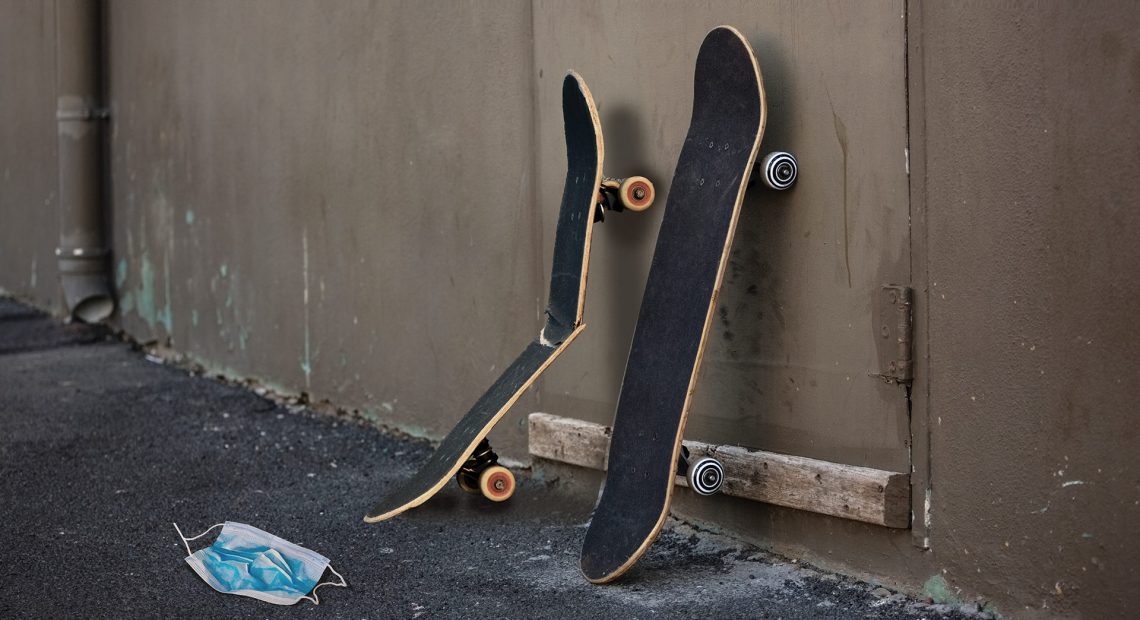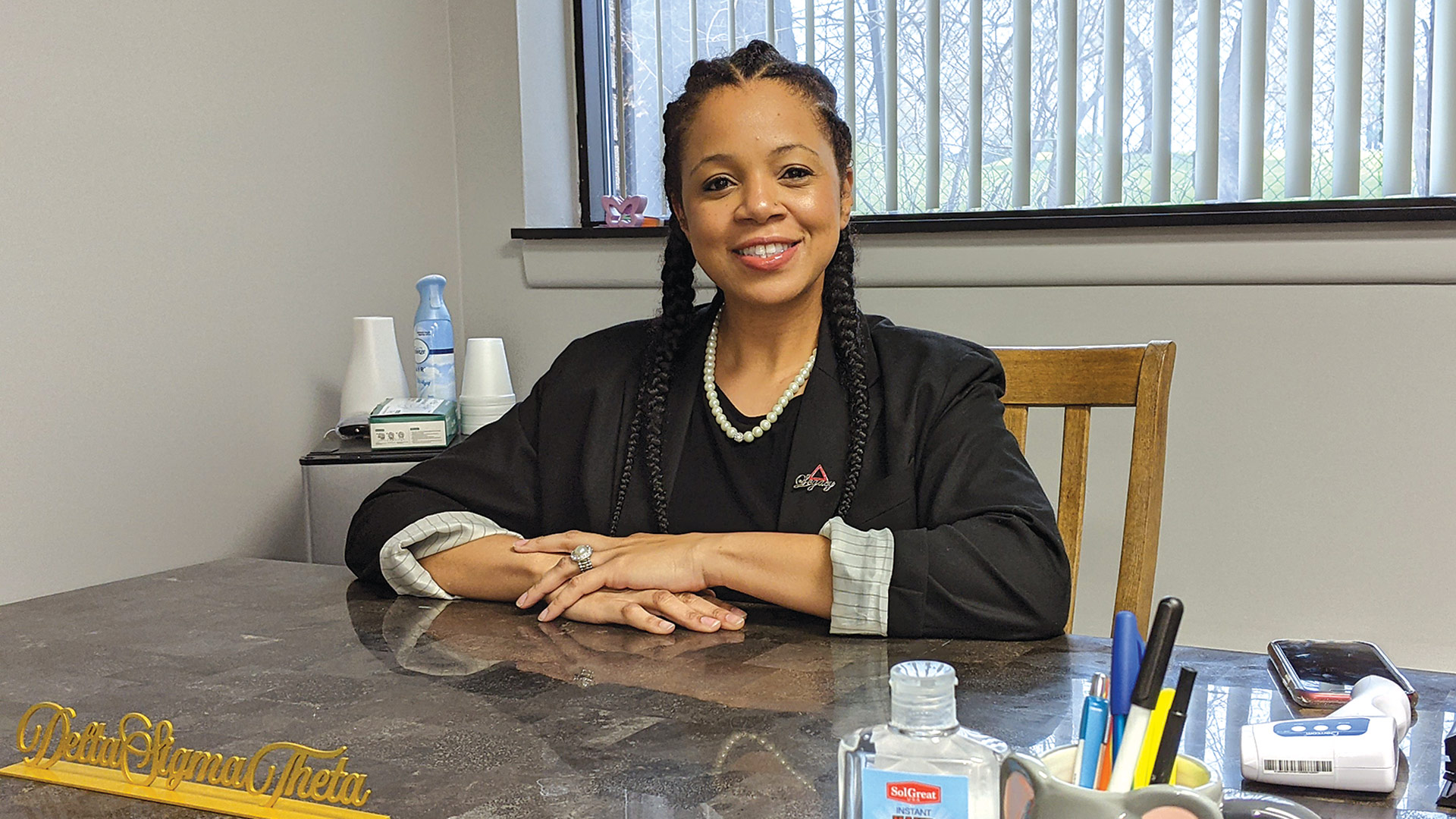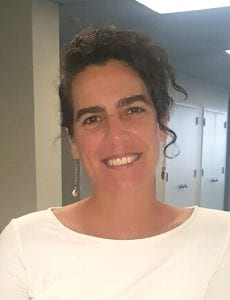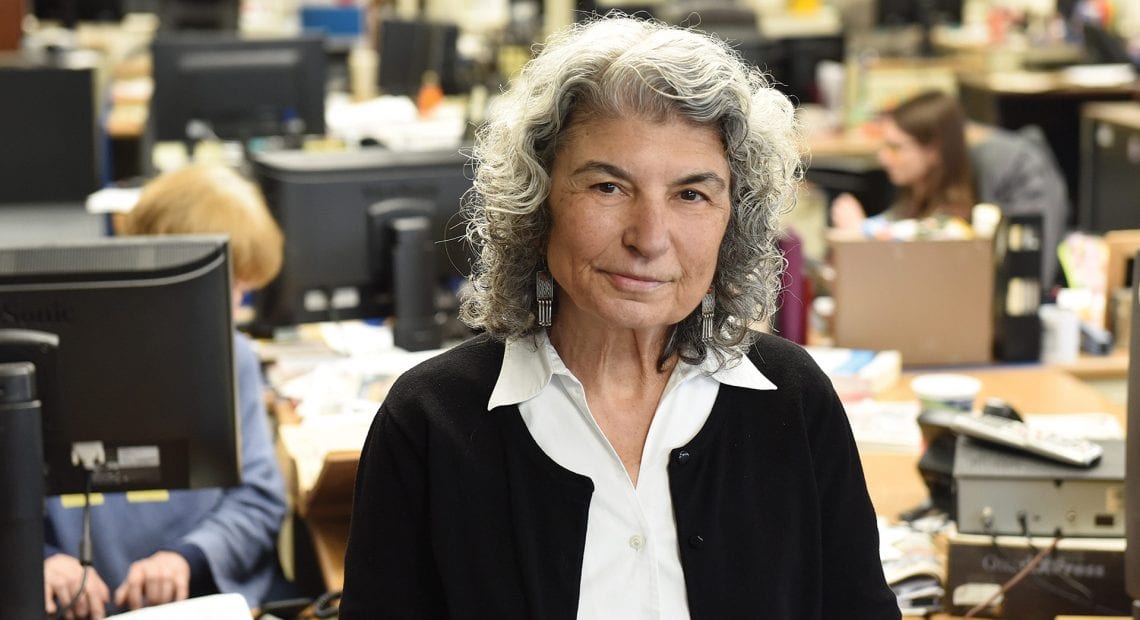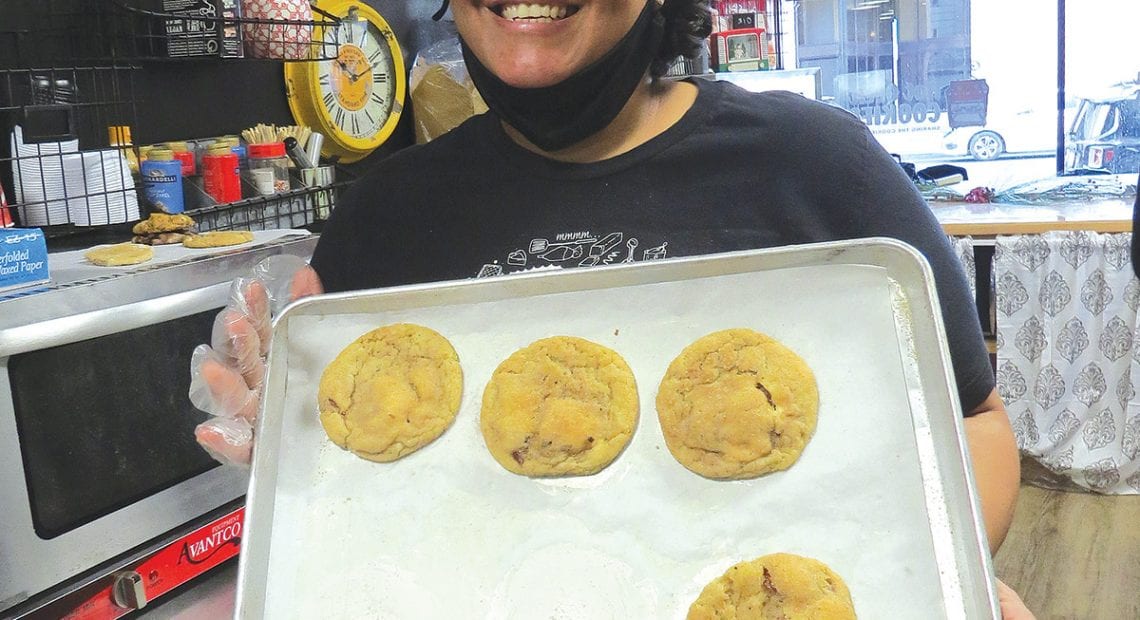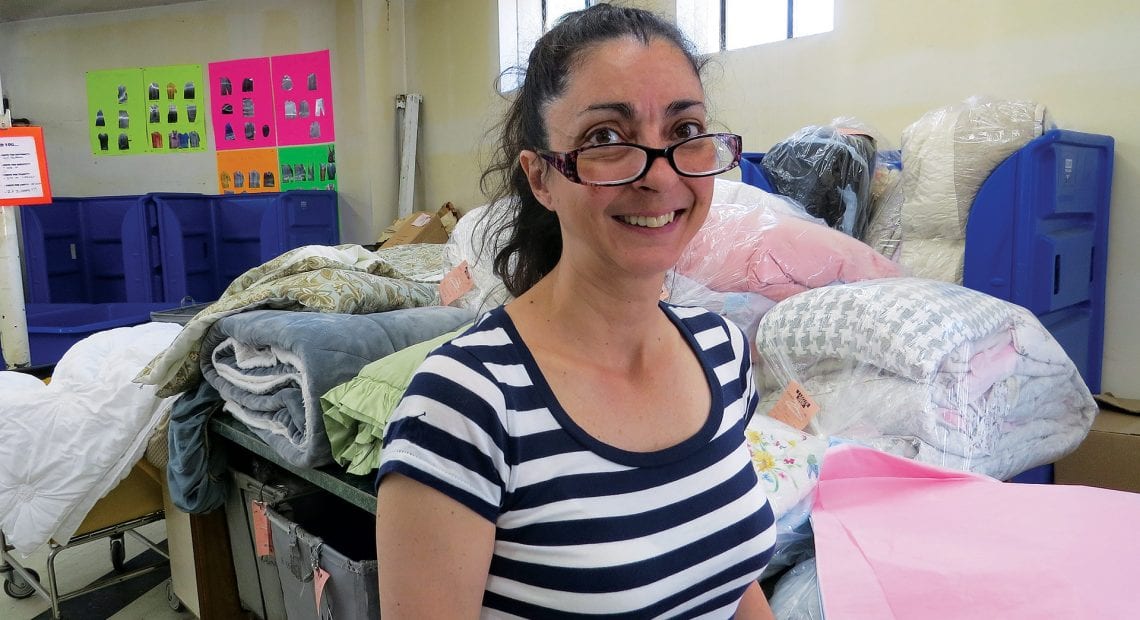Coping with the Conditions

Gary Rome, seen here with ‘Daisy,’ one of his mascots, says cars are moving off the lot as fast as they come in, with most sold long before they arrive.
For the area’s auto dealers, this will be a year, and a December, unlike most and certainly not anything approaching normal. Lots are barren, and showrooms often have used cars under the bright lights. Dealers are coping as best they can, and so are customers, and while current conditions are expected to continue into next year, there seems to be some light at the end of the tunnel.
On one wall in his office at the Hyundai dealership that bears his name, Gary Rome has a large screen that displays images captured by more than two dozen security cameras.
As he talked about the current conditions facing dealers like himself, he gestured toward pictures on that screen of one of the back lots at the massive store on Whiting Farms Road in Holyoke — a barren lot with no cars parked on it.
“Normally … that would be full — four lanes, full,” he said, noting that ‘normal’ was quite some time ago. Now, instead of normal, there is only reality, in the form of inventory shortages that have, as Rome noted, prompted dealers to put used cars in the showrooms, position cars so it looks like there is more inventory than there actually is, and even have employees park in front to provide that same effect.
He’s only taking the first of those steps, and that’s out of necessity, he said with a voice that hints at frustration, which is certainly understandable, but mostly acceptance of a situation that is far beyond dealers’ control and something they will have to live with for at least several more quarters.
“We’re just coming through the second year of the most unprecedented time that the industry has ever faced — and the forecasts for what was going to happen to this industry were far more dire.”
The frustration comes from the knowledge that these dealers could certainly sell a lot more cars if they had them, especially given the pent-up demand and the fact that many consumers have money to spend and are eager to spend it. And also the numbers — most dealers are looking at overall sales volume being down between 20% and 30% from what would be considered a ‘normal’ year. The acceptance part comes from the knowledge that consumers have responded to the situation mostly with patience and understanding, and, overall, dealers are making the best of a bad situation that could actually be worse. Much worse.
“We’re just coming through the second year of the most unprecedented time that the industry has ever faced — and the forecasts for what was going to happen to this industry were far more dire,” said Ben Sullivan, chief operating officer at Balise Motor Sales. “And we’ve actually fared pretty well, and the customers have been accommodating because they can understand; they see the news. Somehow, we’re making it through, and a lot of customers have no issues with doing it this way.”
By ‘this way,’ he meant that, instead of driving onto a lot and choosing from among the dozens of options of the model they want, they’re either ordering what they want and waiting for it arrive in a few weeks (or a few months, as the case may be) or buying something they know is on a truck and on its way — even if it might not be exactly what they want.
Carla Cosenzi, president of TommyCar Auto Group, agreed, noting that her family of dealerships has an appropriately named program that speaks to all this, called Reserve Your Ride.
“People can pick out their vehicle and order it or pick a car out of pipeline,” she said, adding that, while there may be fewer cars to actually choose from on the lots, people can still buy cars, and they are.

Ben Sullivan says there has been some improvement on the inventory front, but it might be two more years before dealers see something close to pre-pandemic levels.
Sometimes, because of the inventory issues, it may not be a new car, she went on, adding that, in this environment, some are waiting patiently for the new cars to roll in, while others are opting for used cars, and still others, those with leases that are expiring, are opting to buy those vehicles.
And this is how it will be for the foreseeable future, said those we spoke with, all of whom noted that COVID-19 and its many impacts have made the future — even the immediate future — hard to predict.
As for the present, it’s December, a month that is generally a good one for dealers, and for many reasons, ranging from holiday-gift purchases (especially luxury models) to businesses buying new vehicles before year’s end for tax purposes.
“This is a time of year when people want something new — new cell phones, a new car, a new used car, a new espresso machine,” said Sullivan, adding that this desire for new coincides with a mostly healthy economy, lower unemployment rates, and, overall, higher levels of confidence. “And when people feel confident, they wind up making large purchases because they are not afraid.”
They may not be afraid, but there will certainly be fewer cars to buy, and that means this will be different kind of December, but one that still holds promise for dealers — and customers — waiting for the picture to improve.
Dropping Down a Gear
To the untrained eye, Sullivan said, it doesn’t look like much is happening at area dealerships.
Indeed, what most people see in that minute they drive by a store is lots of acreage not being occupied by new or used cars. Indeed, the vacant parking lots have become one of the enduring images of the supply-chain crisis at this stage of the pandemic.
But a closer look would reveal plenty of activity, just not the type that would be considered normal, he said.
“If you put a stop-motion camera at any dealership, you’d see 18-wheelers coming in, you’d see cars coming off of it, you’d see them going through their pre-delivery inspections and service and the salesperson calling the customer to say his vehicle has arrived, and that person picking it up the next day,” he noted. “That’s about how fast this stuff is going right now.”

Carla Cosenzi says dealers and customers alike are adjusting to a landscape that is without precedent in the auto industry.
Other dealers we spoke with echoed those remarks, saying the days of large inventories have been replaced by that new way of doing business described earlier, with the vast majority of cars sold before they reach the lot (70% to 80%, by most estimates) or within days of rolling off the truck.
This new world order is on clear display on a huge board in one of the offices at Gary Rome Hyundai, one that tracks which vehicles have been sold, by whom, and when they will arrive on the lot for the customer to pick up.
“We’re just coming through the second year of the most unprecedented time that the industry has ever faced — and the forecasts for what was going to happen to this industry were far more dire.”
It’s a different landscape, to be sure, said Rome, adding that there would normally be more than 500 cars on the Hyundai lots; currently there are roughly 140, about one-quarter of that total, with only 20 of them being new cars.
It’s the same at the TommyCar dealerships, said Cosenzi, noting that the Hyundai/Genesis dealership in Northampton would normally have 200 new models on the ground. After a shipment arrived the day before she talked with BusinessWest, there were 30 to 35. At the Volkswagen store, also in Northampton, there would usually be 80 new cars. Now, 20 is the norm.
These numbers prompt frustration because they collide with other kinds of numbers, especially the ones pertaining to unemployment, consumer spending, and consumer confidence levels, said Rome, noting, as others did, that pent-up demand remains high for all types of vehicles, but especially new models.
“Our clients, in general, have more money than they had two years ago, they have more savings, they have more equity in their homes,” he explained. “And they also feel like they want to do something good for themselves. They’ve been locked down for the past 20 months, and they’ve been looking at the same car all that time. They want to do something nice for themselves.”
Such dramatic reductions in inventory also make for obvious changes and adjustments, including those that need to be made for the holidays, said Cosenzi, noting that many of those desiring to put a new car in the driveway on Christmas morning understood that, to make that happen, they needed to place their order in November. And they might also have had to settle for their second choice when it came to color.
Meanwhile, more consumers are looking toward used cars, which are in greater abundance but still not in the pre-pandemic numbers, she said, and also at keeping a car that is coming off lease instead of trading it in for a new one.
“And a lot of those buy-out values are under current market values,” she said. “It’s a good deal for the customer.”
While things certainly aren’t normal, in some respects, the picture is actually starting to improve, said Sullivan, noting that arrivals are expected to pick up in December and be ahead of October and November levels and well ahead of months earlier this year, when supply-chain woes peaked.
“There’s cars coming in, and there’s cars going out,” he said, adding that his general managers — and there are nearly 20 of them — have reported as a group that the company should expect a solid December.
Meanwhile, looking down the road, or trying to, anyway, dealers said it is difficult to say when ‘normal’ — as in lots full of cars for people to choose from — will return, or even if they will return.
“I don’t think we’ll see it in 2022,” said Sullivan. “I think it will be 2023 before you drive by a dealership and see a stock full of cars. It’s not until the third quarter of 2022 where you’ll see maybe 65% of what you’d normally see for ground stock.”
Cosenzi concurred, but noted that projections vary with the brand, with some manufacturers responding to the worldwide microchip shortage and supply-chain crisis better than others.
“We’re anticipating that things will get better over the next few months, but it will take a long time for us to recuperate and get back to the inventory levels that we were accustomed to before COVID,” she said. “I think it will take at least a year.”
As for the longer term, Sullivan reiterated comments he made earlier this year when he said some manufacturers may not go back to those days when they built cars and then hoped dealers would sell them. They likely won’t build to order, although that’s possible, he said, but they may build fewer cars and put the hard focus on models they know the customer wants.
“Most of the manufacturers have decided that just ‘build, build, build, build, build’ isn’t that profitable for them,” he explained, “because all the cars end up on our lots, and we have to find a way to get rid of them, and they have to put incentives on them. There is a level of production that makes more sense to them.
“We’re not going to be this order-to-delivery industry, because when people want something, they want it very quickly, and some want it now,” he went on, adding that, despite this, levels of overall ground stock will likely be lower in the years to become, perhaps 75% of their current levels.
Bottom Line
But there are still far too many unknowns to make any hard projections about the future, said those we spoke with, adding that, right now, they’re dealing with right now.
And that’s the picture that comes clearly into focus on that screen in Rome’s office. Things are not as they were, and they may not be like that for a while — if ever again, in some respects.
“This is a year unlike anything I’ve seen in all the years I’ve been in this business,” said Cosenzi, who spoke for everyone in the industry with those comments, adding that, while the picture is slowly improving, what would be considered normal is still far down the road.
George O’Brien can be reached at [email protected]




